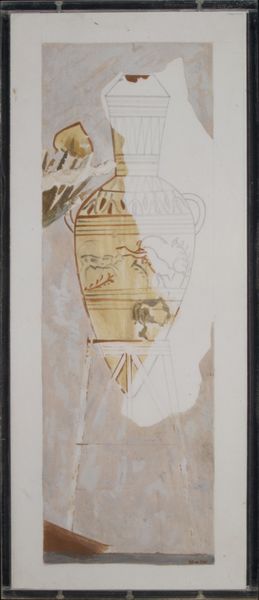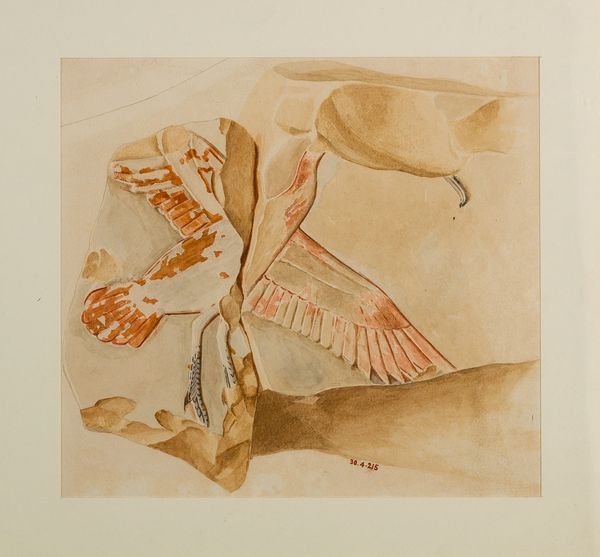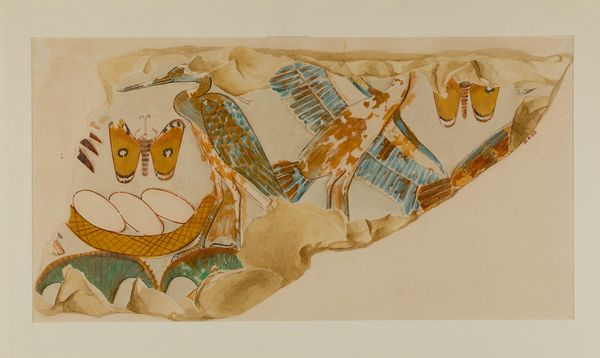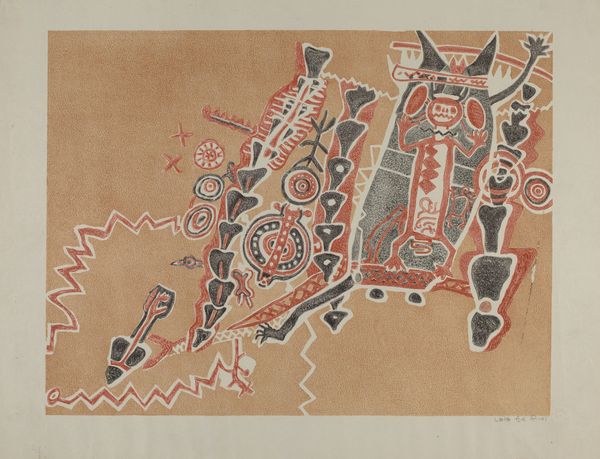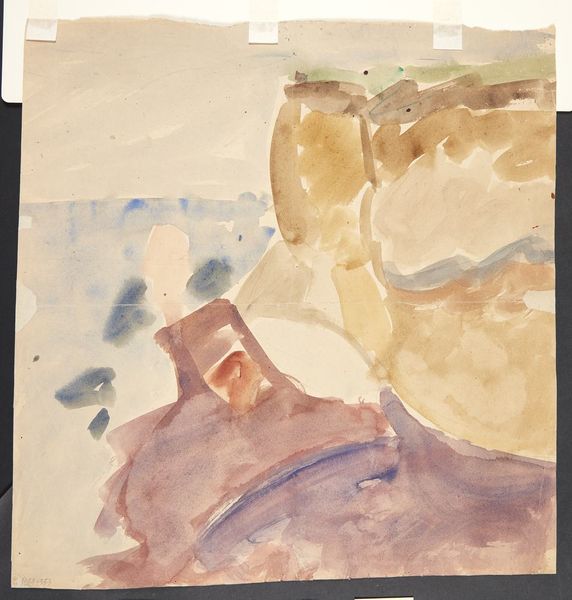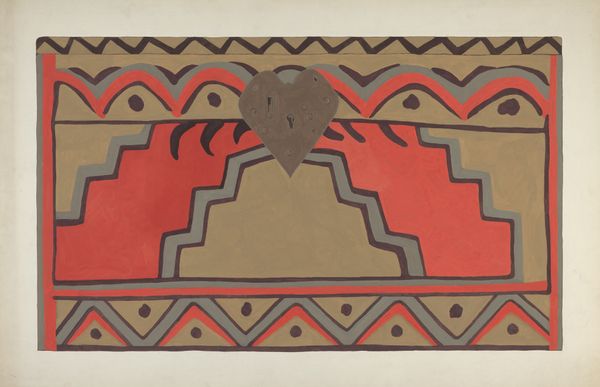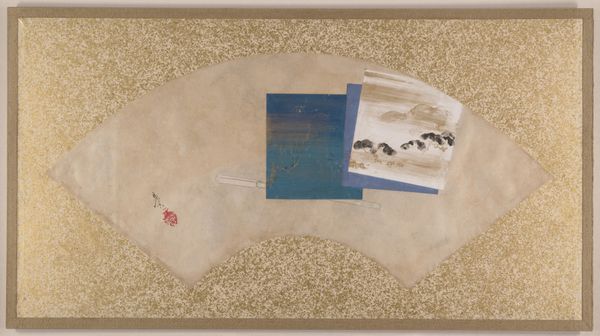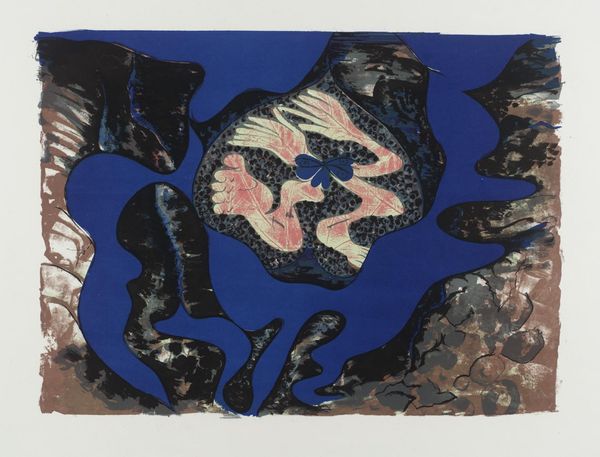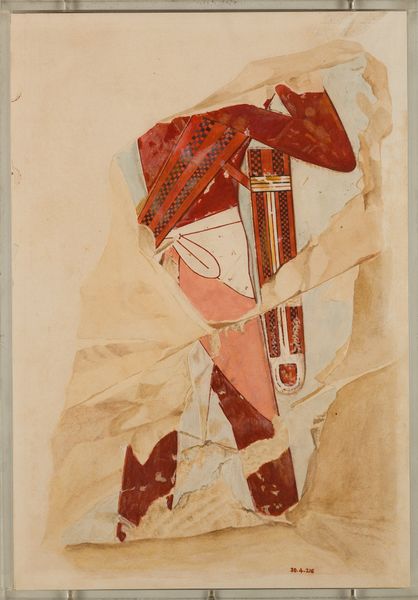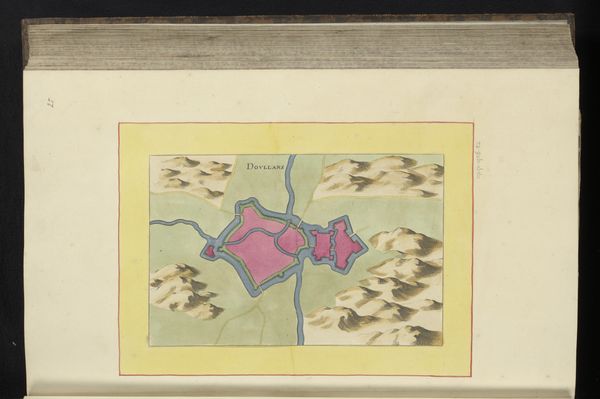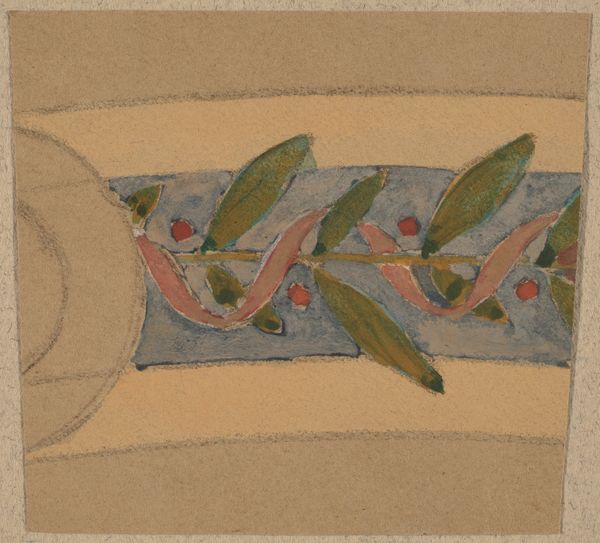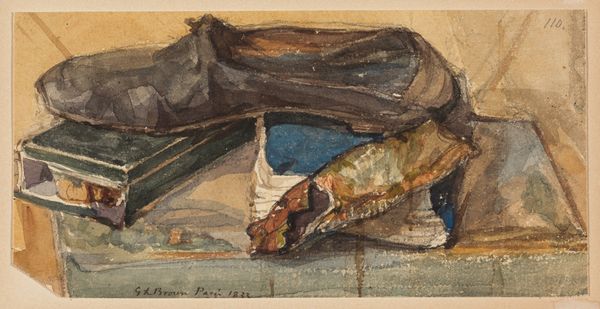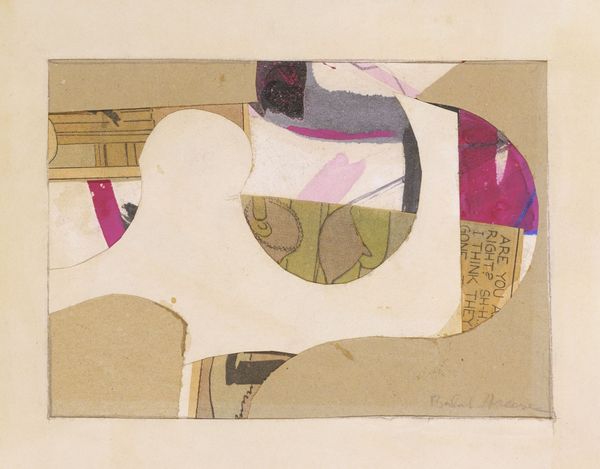
painting, watercolor
#
painting
#
ancient-egyptian-art
#
figuration
#
oil painting
#
watercolor
#
egypt
#
ancient-mediterranean
#
watercolor
Dimensions: H. 13.5 cm (5 5/16 in); w. 21 cm (8 1/4 in) scale 1:1
Copyright: Public Domain
Editor: This is "Hippopotamus Head," an ancient Egyptian watercolor thought to be from around 1473 BC. It has a cool, almost whimsical feel, and the fragmentary nature makes it feel incomplete. How do you interpret this work? Curator: The hippo was a complex symbol in ancient Egypt, both revered and feared. We see this duality reflected here. The blue around the animal perhaps represents the life-giving Nile, crucial for agriculture, while the hippo itself, despite its somewhat cartoonish appearance to modern eyes, was associated with destruction and chaos. Editor: Destruction? I wouldn't have guessed. Curator: Precisely! Think about its size and power. While the goddess Taweret was depicted with a hippo head, offering protection during childbirth, the animal itself represented untamed nature. Consider the fragmented nature. Does this incompleteness amplify feelings of vulnerability and temporality for you? It subtly confronts us with mortality. Editor: I see your point. The fragment emphasizes the passage of time and makes it seem like just a small piece of the larger society and beliefs of the time. The hippo as chaos – I didn't consider the environmental and social anxiety that might produce. Curator: This piece invites us to consider how ancient Egyptians navigated these anxieties. By representing the hippo, they weren't just documenting an animal, they were grappling with profound questions of power, gender, nature, and control. What do you think about how the colours emphasize that meaning? Editor: Now that you mention it, the colours give an insight in their understanding of water. It really contextualises what they felt water was. Thank you! Curator: Absolutely, every piece offers another view into history and culture.
Comments
No comments
Be the first to comment and join the conversation on the ultimate creative platform.
